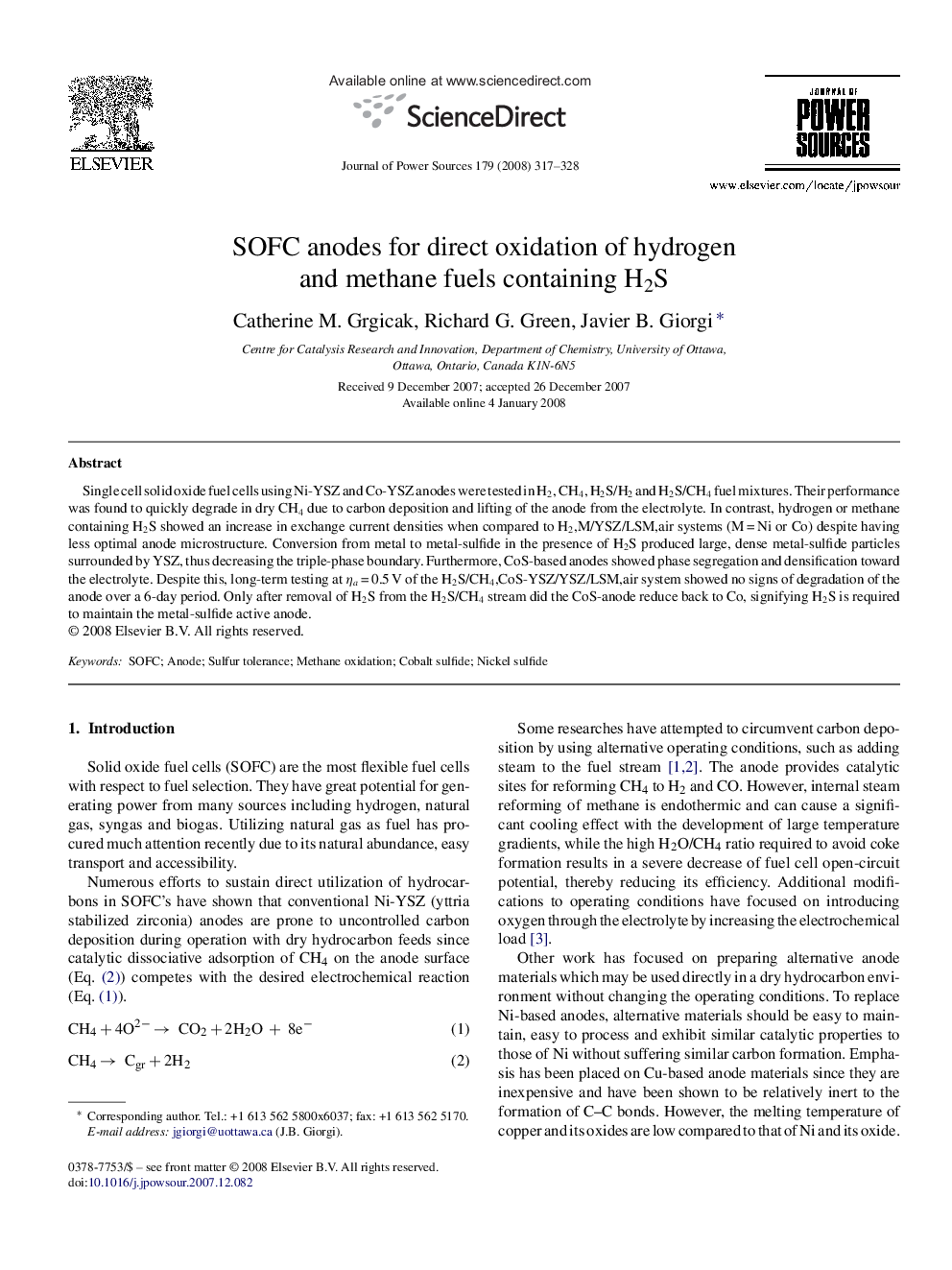| Article ID | Journal | Published Year | Pages | File Type |
|---|---|---|---|---|
| 1291438 | Journal of Power Sources | 2008 | 12 Pages |
Single cell solid oxide fuel cells using Ni-YSZ and Co-YSZ anodes were tested in H2, CH4, H2S/H2 and H2S/CH4 fuel mixtures. Their performance was found to quickly degrade in dry CH4 due to carbon deposition and lifting of the anode from the electrolyte. In contrast, hydrogen or methane containing H2S showed an increase in exchange current densities when compared to H2,M/YSZ/LSM,air systems (M = Ni or Co) despite having less optimal anode microstructure. Conversion from metal to metal-sulfide in the presence of H2S produced large, dense metal-sulfide particles surrounded by YSZ, thus decreasing the triple-phase boundary. Furthermore, CoS-based anodes showed phase segregation and densification toward the electrolyte. Despite this, long-term testing at ηa = 0.5 V of the H2S/CH4,CoS-YSZ/YSZ/LSM,air system showed no signs of degradation of the anode over a 6-day period. Only after removal of H2S from the H2S/CH4 stream did the CoS-anode reduce back to Co, signifying H2S is required to maintain the metal-sulfide active anode.
